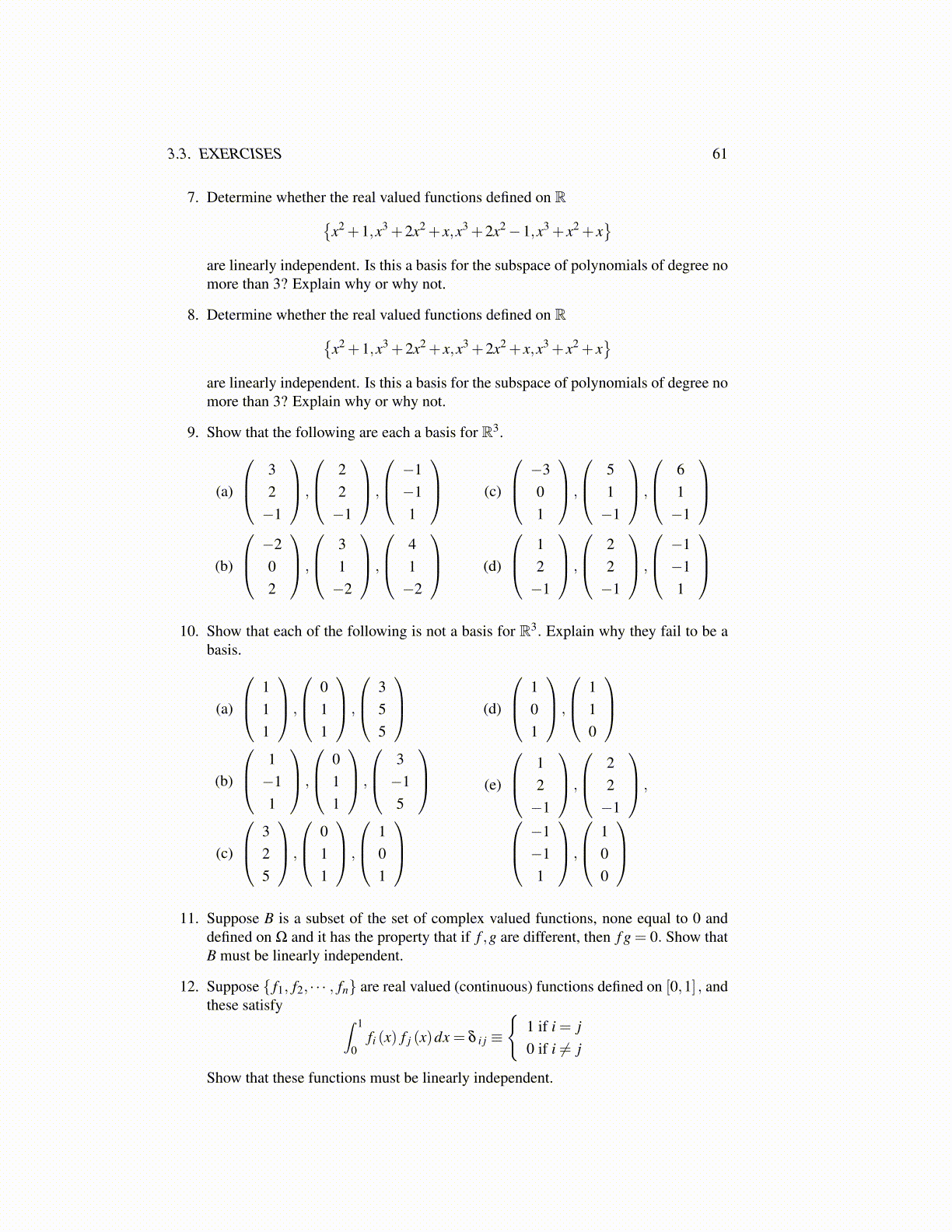
3.3. EXERCISES 61
7. Determine whether the real valued functions defined on R{x2 +1,x3 +2x2 + x,x3 +2x2−1,x3 + x2 + x
}are linearly independent. Is this a basis for the subspace of polynomials of degree nomore than 3? Explain why or why not.
8. Determine whether the real valued functions defined on R{x2 +1,x3 +2x2 + x,x3 +2x2 + x,x3 + x2 + x
}are linearly independent. Is this a basis for the subspace of polynomials of degree nomore than 3? Explain why or why not.
9. Show that the following are each a basis for R3.
(a)
32−1
,
22−1
,
−1−11
(b)
−202
,
31−2
,
41−2
(c)
−301
,
51−1
,
61−1
(d)
12−1
,
22−1
,
−1−11
10. Show that each of the following is not a basis for R3. Explain why they fail to be a
basis.
(a)
111
,
011
,
355
(b)
1−11
,
011
,
3−15
(c)
325
,
011
,
101
(d)
101
,
110
(e)
12−1
,
22−1
,
−1−11
,
100
11. Suppose B is a subset of the set of complex valued functions, none equal to 0 and
defined on Ω and it has the property that if f ,g are different, then f g = 0. Show thatB must be linearly independent.
12. Suppose { f1, f2, · · · , fn} are real valued (continuous) functions defined on [0,1] , andthese satisfy ∫ 1
0fi (x) f j (x)dx = δ i j ≡
{1 if i = j0 if i ̸= j
Show that these functions must be linearly independent.